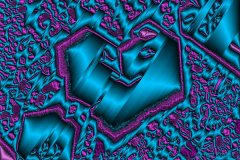After 2004, a new approach to metallic alloys design with multiple principal elements in near-equimolar concentrations, termed high-entropy alloys (HEAs), has been launched. According to this concept, a high entropy of mixing can stabilize disordered solid solution phases with simple structures like a body-centered cubic (bcc), a face-centered cubic (fcc) and a hexagonal close-packed (hcp) with small unit cells, in competition with ordered crystalline intermetallic phases that often contain structurally complex giant unit cells. A HEA structure is characterized by a topologically ordered lattice with an exceedingly high chemical (substitutional) disorder, so that a HEA can be conveniently termed as a “metallic glass on an ordered lattice“. In order to achieve a high entropy of mixing, the alloys must be composed of five or more chemical elements in similar concentrations, ranging from 5 to 35 atomic % for each element, but do not contain any element whose concentration exceeds 50 at. % (there is no principal element). Examples of HEAs are alloys derived within the systems Al-Si-Co-Cr-Cu-Fe-Mn-Ni, W-Ta-Nb-Hf-Zr-Ti-Mo-V, and Gd-Tb-Dy-Ho-Er-Tm-Lu-Y.





